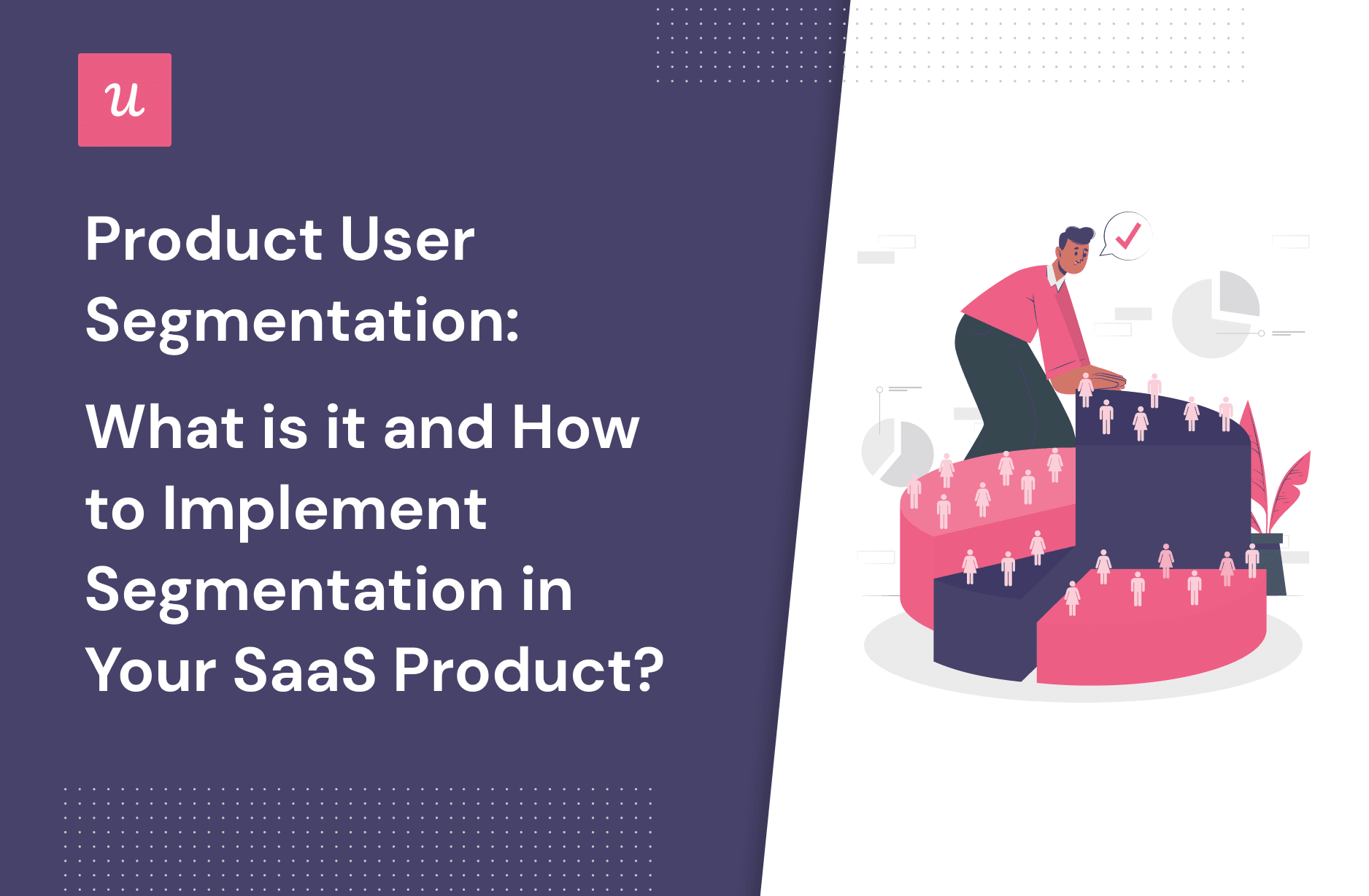
Are you aware that product user segmentation affects all stages of the user journey and the overall growth of a business?
You can use product usage data to develop an effective marketing strategy, improve products, retain customers, and accelerate customer adoption.
But what is more important is that without customer segmentation, you simply cannot build a sought-after product with high user loyalty.
Curious to get more details?
This article will walk you through each essential step of implementing user segmentation in SaaS products.
Let’s roll!
Try Userpilot Now
See Why 1,000+ Teams Choose Userpilot

Summary of product user segmentation
- Product user segmentation is the process of grouping customers by specific criteria such as low NPS score, web session duration, product usage segmentation, uncompleted goals in the user journey, etc.
- Customer segmentation allows you to understand users on a deeper level and analyze their behavior more precisely to tailor marketing positioning and product experiences.
- Customer segmentation also affects retaining users and boosting their loyalty. You can also learn why different segments churn more often and fix the issue.
- The most common types of user segmentation are demographic, geographic, technographic, firmographic, and behavioral.
- Utilize firmographic data for creating personalized onboarding processes.
- Behavioral segmentation divides customers based on their in-app engagement to unlock and fix product friction.
- There are eight key product user segments to focus on: new users and existing users, free trial vs. lifetime free vs. paying users, and users that haven’t engaged with a core feature. Also, users by persona, users with low MRR, loyal users, inactive users, and users by NPS score.
- Creating segments and conducting a customer segmentation analysis is impossible without the right tool for the job. Userpilot is a product growth platform that lets you create segments based on multiple criteria, trigger flows to certain segments, and shows their in-depth behavior. Book a demo to learn more.
What is product user segmentation?
Product user segmentation is the process of grouping customers by specific shared criteria. For example, low NPS score, web session duration, completed goals in the user journey, company’s industry, users that haven’t engaged with a core feature, etc.
Different user segments can be analyzed in great detail to understand what caused them to use your product, what value they receive from the product, why they became power users or brand advocates, and so on.
What are the benefits of the customer segmentation model?
An effective customer segmentation strategy has a lot of benefits that you can utilize for your SaaS. It helps you receive valuable insights, and detect common behavioral patterns that you can use to improve your product retention rate.
Now let’s dig deep into the benefits that customer segmentation can offer you.
- Understand users better: Segmentation helps you understand users on a deeper level. It allows you to create user segments based on certain behavioral patterns so you can take action according to their user behavior.
- Deliver a personalized user onboarding: You can personalize the onboarding process by segmenting users, which will allow you to boost product engagement and improve feature usage and product adoption rates.
- Improve customer retention rate: Customer segmentation can help you improve your retention rate and reduce churn as you can easily identify disengaged users who are at high risk. Simply segment users based on low NPS scores and proactively reach out to understand the reason behind their low ratings.
- Boost customer loyalty: Behavioral segmentation enables you to increase customer loyalty and product stickiness by figuring out what drives user segments with the highest engagement.
- Offer product upgrades at the right time: A thoughtful customer segmentation process enables you to timely detect which customers are the right fit for upsells and account upgrades.
- Win back churned customers: By segmenting churned users and identifying the reasons for their cancellations, you can improve your product, fix errors, and try to win back a customer with a new offer. You can use churn surveys to collect insights and then send them an email to retry your product.
Most common types of user segmentation
What product usage data should we capture to segment customers? What are the most important segments that we should pay attention to in our user segmentation strategy?
What types of segmentation matter most for SaaS? Let’s find out.
Demographic segmentation
This involves segmenting customers based on shared traits such as age, education, language preferences, occupation, or religion.
Commonly used to design highly tailored marketing campaigns for both new and current users.

Firmographic segmentation
As a product manager, you can utilize firmographic information for creating personalized onboarding. For instance, build different checklists for small and large companies as they probably try to solve different tasks.
The firmographic information may contain the following entities:
- Industry
- Headcount
- Job titles
- Business model
- Annual Revenue or LTV (lifetime value)
- Decision maker’s title
- Experience (junior, middle, senior, or newbie)
- Plan type, e.g. trial users

Geographic segmentation
Geographic segmentation is used for running targeted ad campaigns or analyzing which location, country, city, or area performs better in terms of driving revenue growth and ARR. When it comes to in-app, use this if you are launching a new feature only in specific countries and want to reach those users only.

Behavioral user segmentation
User segmentation based on behavioral factors is a goldmine for product teams. You can determine user groups based on their experiences with your product:
- What features do they engage with seldom/often?
- How often do they interact with your core features?
- Where they are in the customer journey stage?
- In what step of the user journey do we lose customers the most?
- Time spent inside the product, etc.

Capturing product usage data helps you unlock and fix product friction and fine-tune your in-app communication with customers, aka providing more contextual and timely help.
Psychographic user segmentation
Psychographic segmentation is more about looking into customers’ attitudes. What lifestyle do they follow and encourage, and how do their value and beliefs vary?
This customer data helps marketers find a correlation between purchasing decisions and users’ socioeconomic status.
For product teams, you may want to digitalize product sentiment (which is also related to psychographic data) by implementing customer satisfaction or NPS surveys.
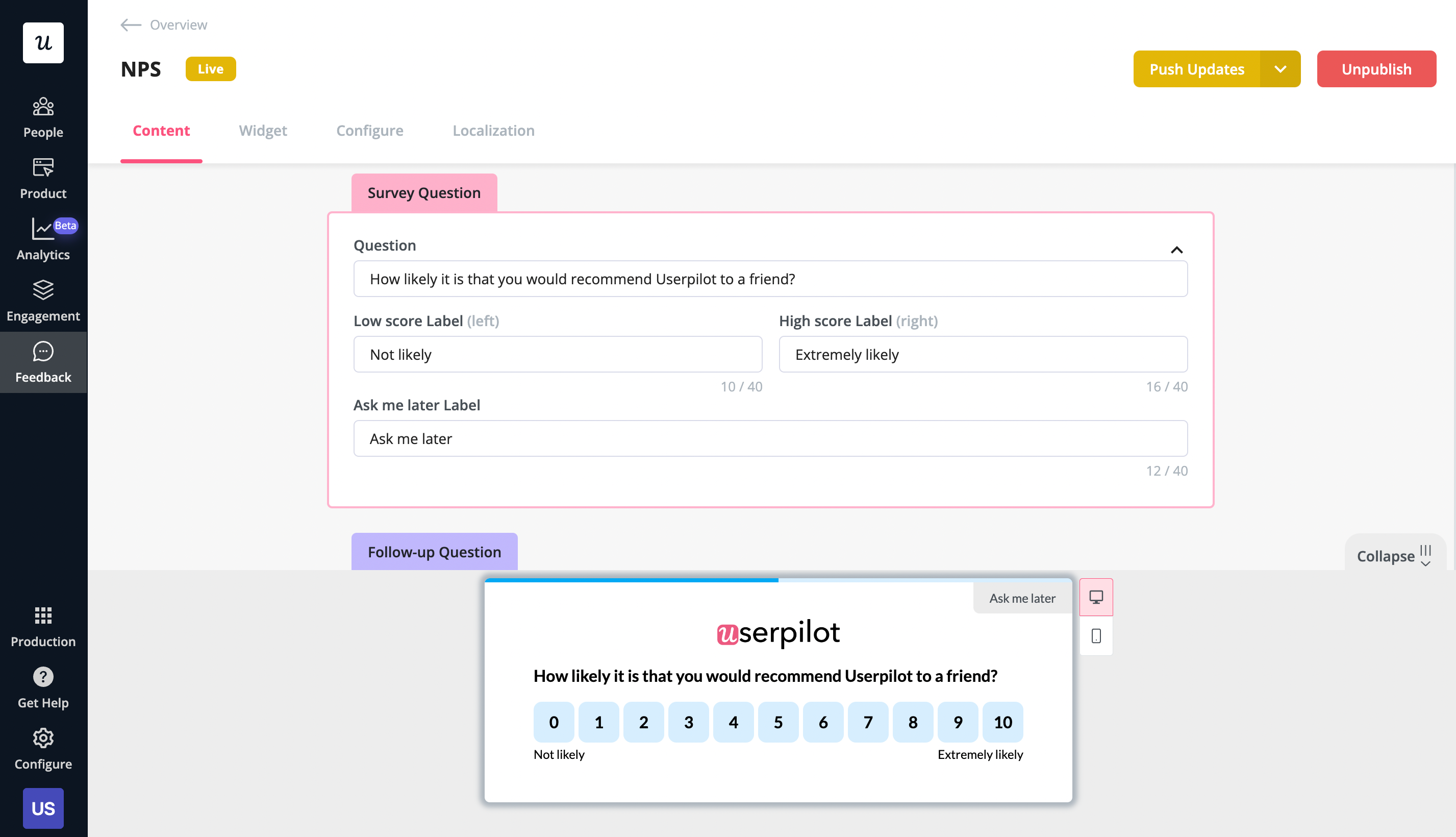
Technographic segmentation
Information about the tech side of the user like their devices (a laptop or mobile), browser type, or what software they use to get their job done.
Gathering technographic information will help you make informed decisions when it comes to tailoring your product to a specific segment first.
For instance, if you want to make a quick update for mobile or desktop product versions, you’d better check which one brings more revenue.

8 key product user segments to focus on
Now that we have gone through the general types of user segmentation, let’s narrow down our focus on specific product user segments. We will define what product user behaviors to track and act on in the first place.
- New users vs. existing users are entirely different user segments to analyze. New users may be misguided by poor onboarding or lack of it. In contrast, paid users may encounter product friction points with particular features.
- Free trial vs. lifetime free vs. paying users: When the former group may need additional support to get them to the product activation faster, resulting in their first purchase, the latter wants you to deliver the additional value and first-class customer care, which results in upgrades or upsells.
- Users that haven’t engaged with a core feature: Spot and fix the issues on why some customer segments avoid interactions with a core product feature.
- Users by persona: Address the user persona when you are lost in feature requests or bug fixing end users are asking for. Thus, you will be able to prioritize your tasks according to the user persona as this segment drives money.
- Users with low MRR can be those who don’t entirely understand product value, so you should proactively reach out to them and offer a personal demo/help.
- Loyal users: This is the segment that you should embrace. You’re here to find out what made them love your product and what should be improved. Loyal customers are likely to give you honest feedback you can capitalize on.
- Inactive users: Try to figure out what caused them to stop using your product by looking at your product analytics.
- Users by NPS score: User segmentation by NPS score is crucial because it allows you to catch problems customers deal with in real-time mode.
How can Userpilot help you with customer segmentation analysis?
User segmentation is essential for creating a personalized and contextual onboarding experience. Userpilot can segment users based on demographics, product usage data, NPS scores, and more. You can then trigger flows or filter analytics based on segments.
Here’s an overview of Userpilot’s customer segmentation capabilities:
- Segment conditions: Userpilot lets you form segments by adding different conditions like user data, company data, features and events, etc. You can then use these segments as analytics filters or flow triggers later on.

- Analytics filters: Userpilot’s product analytics and user insights dashboards can be filtered to only display data from specific segments (or companies). This will help you extract insights from certain cohorts and compare how adoption or activation varies from one segment to the next.
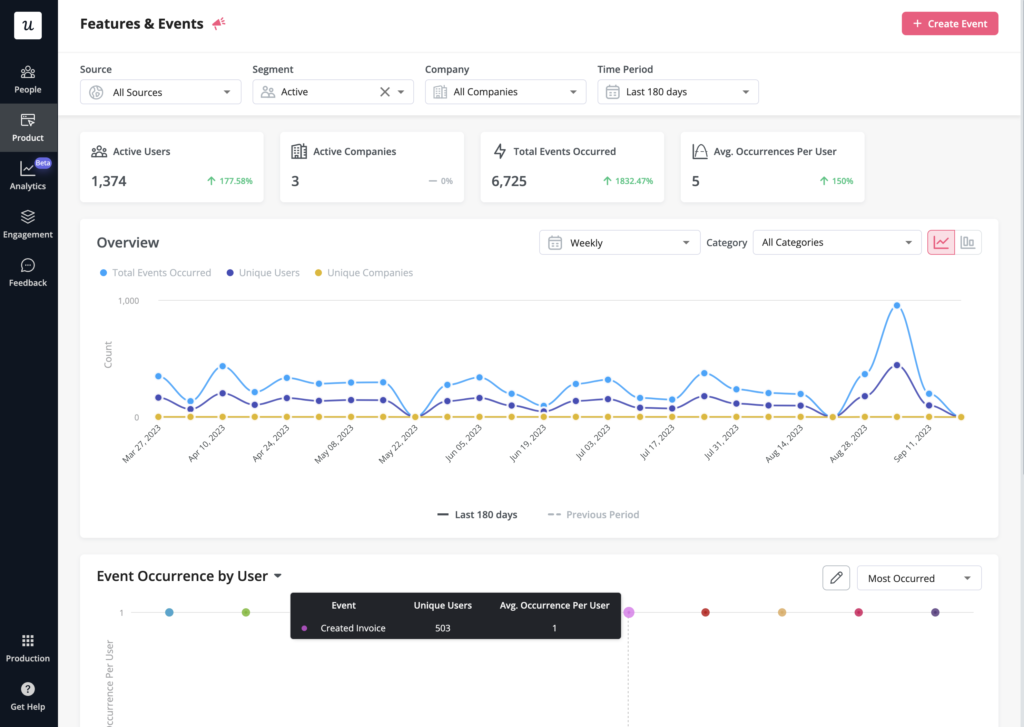
- Flow triggers: Userpilot’s audience settings let you trigger flows for specific segments or target users that meet certain conditions. You can combine this with page-specific or event-occurrence triggers to show relevant flows to the right users at the most contextual moments.
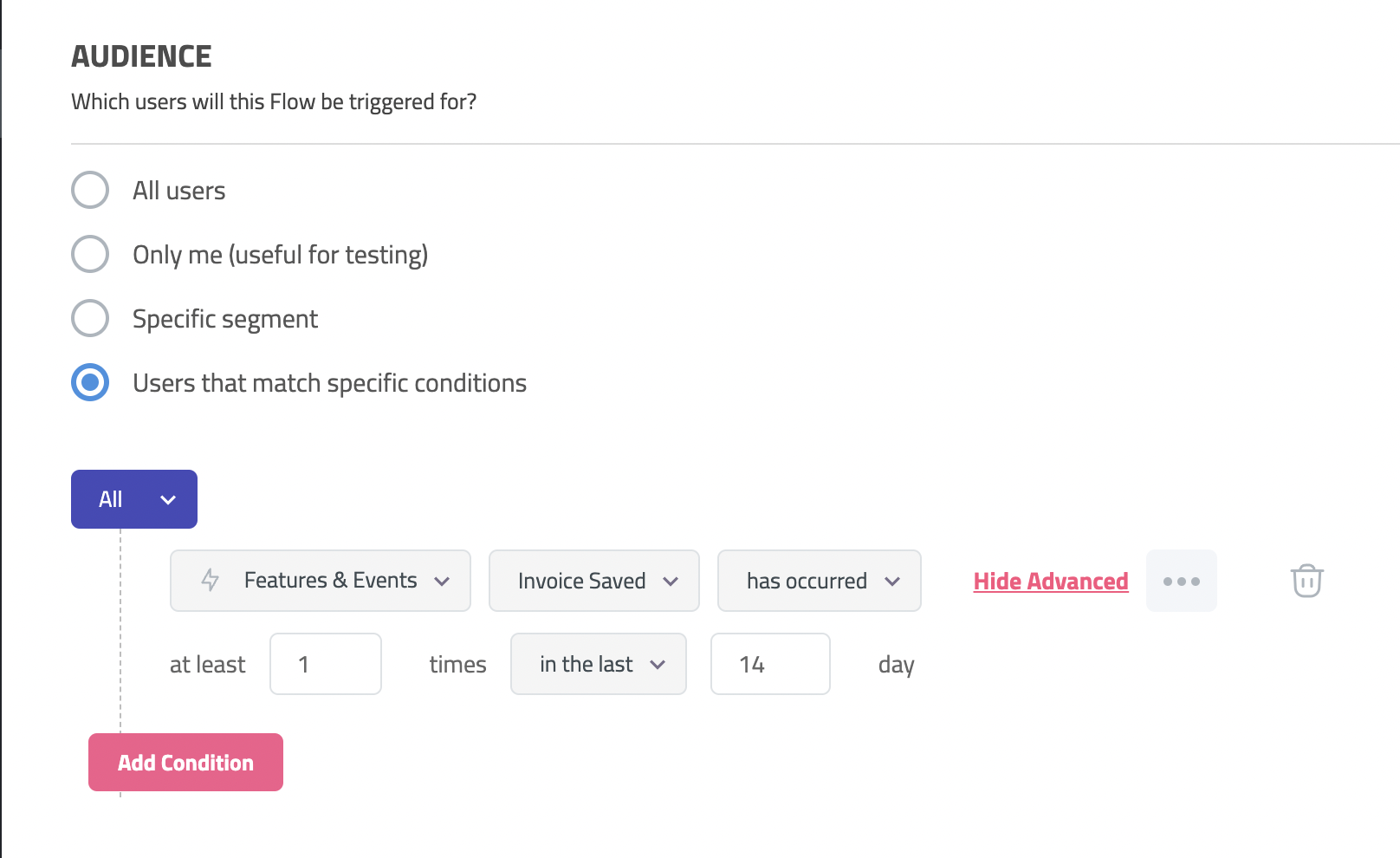
- External data: Userpilot integrates with tools like Amplitude, Google Analytics, Mixpanel, and Segment using a one-way integration. This means you can use the data inside Userpilot to build advanced segmentation and trigger contextual experiences. For more advanced use cases, the two-way integration with Hubspot lets you send and receive data, unlocking a full set of use cases.
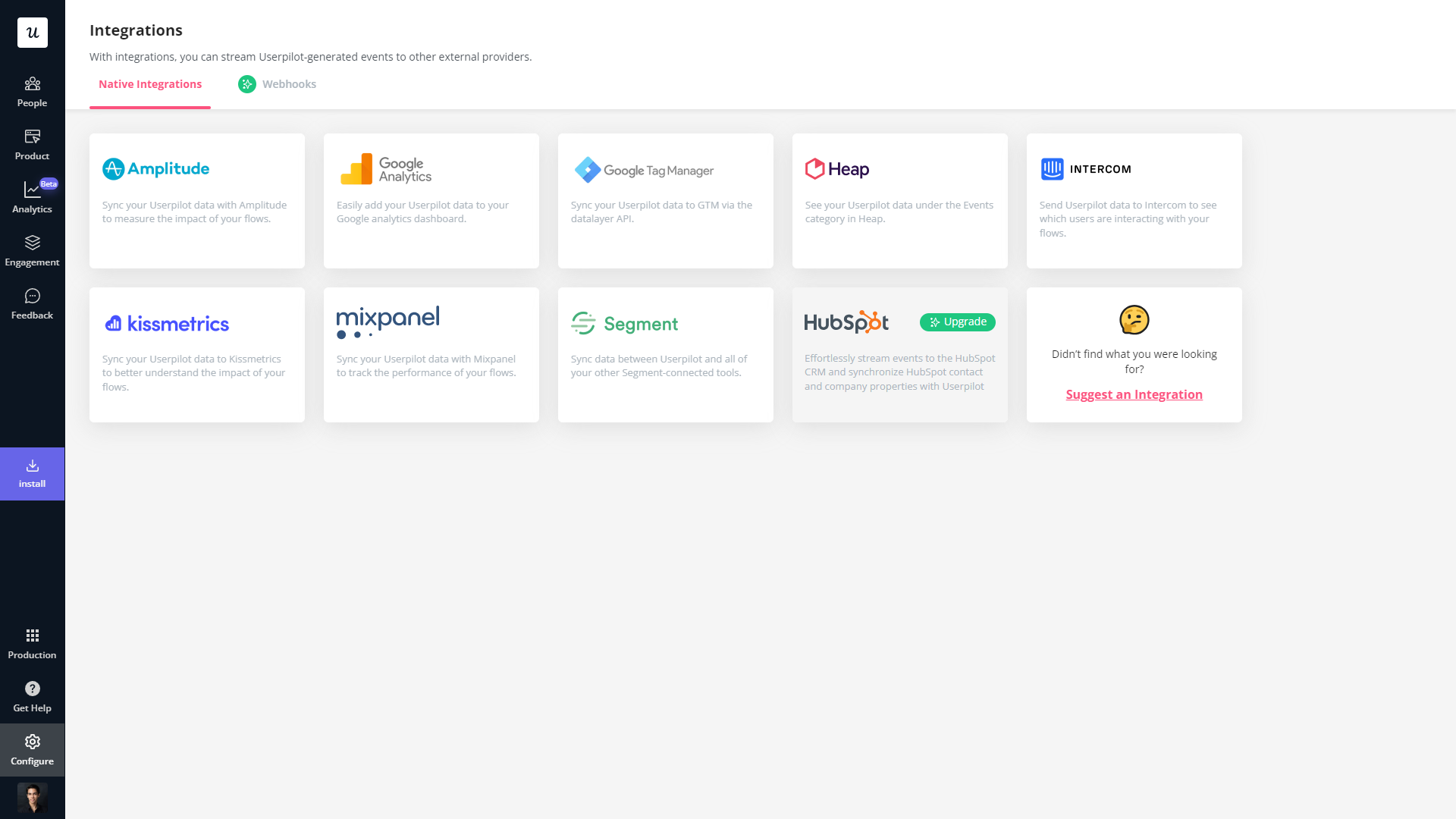
Conclusion
User segmentation is the right way to build a sought-after SaaS with incredible user stickiness. Always understand your users on a deeper level and try to fulfill all the expectations that you set for your product.
If you want to understand better how your users behave inside the app, collect feedback in a contextual way, and reach out to your customers to improve engagement and boost customer success, get a Userpilot Demo and get started right away.






